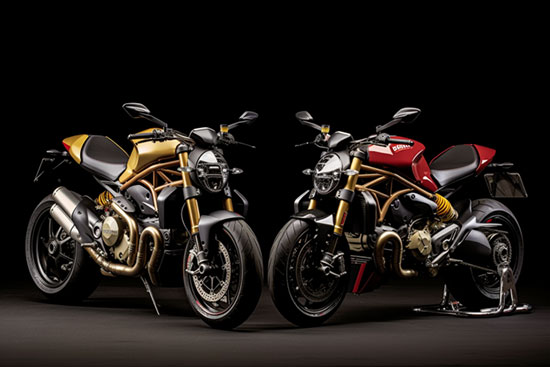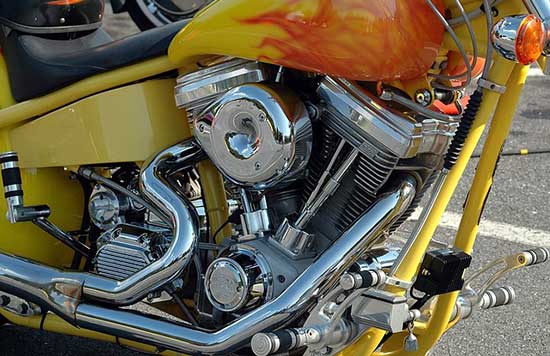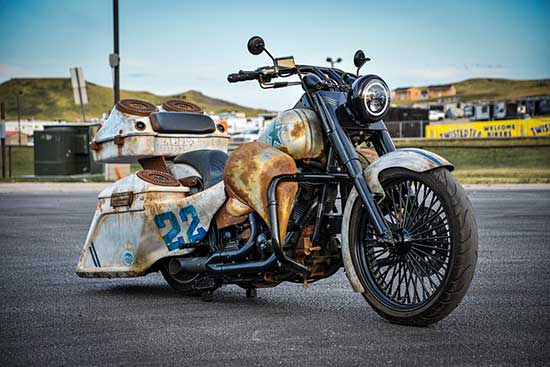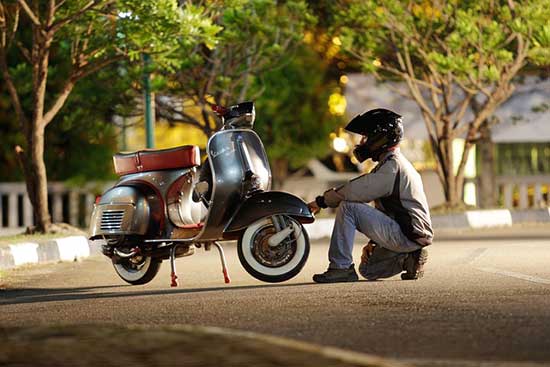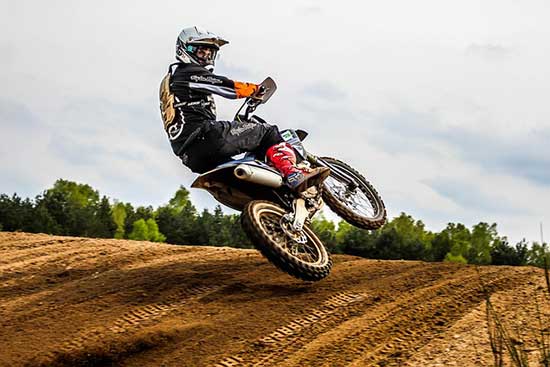You’re cruising down the road when you notice something’s off – there’s air escaping from your motorcycle’s carburetor. You’re not just hearing things; it’s a common issue that can affect your bike’s performance.
Don’t worry, we’ve got you covered. We’re going to delve into why this happens, its impact, and how you can fix it. You’ll also learn preventative measures to avoid future carburetor issues.
Let’s get your machine running smoothly again.
Contents
Understanding the Role of a Motorcycle Carburetor
You’ve got to grasp how a motorcycle carburetor plays a pivotal role in mixing the correct amount of gasoline with air for your engine to run smoothly. It’s basically the heart of your bike, controlling the speed, the power, and overall performance.
When you twist your throttle, the carburetor’s jets determine how much fuel enters the combustion chamber. This air-fuel mixture is crucial, and if it’s off, you’ll experience problems like stalling or rough idling.
The venturi, a narrow part of the carb’s body, accelerates the airflow, creating a vacuum that draws fuel into the airstream. The pilot and main jets then control the fuel flow for different throttle openings.
Understanding your carburetor’s function can help you troubleshoot issues and ensure optimal performance on the road.
Common Causes of Air Emission From Carburetors
You’re dealing with air emissions from your carburetor, and it’s often due to problems like improper fuel mixture or a dirty carburetor. This can significantly affect your bike’s performance.
Here’s a table to help you understand the common causes, symptoms, and fixes:
| Cause | Symptoms | Fixes |
|---|---|---|
| Improper Mixture | Poor acceleration | Adjust mixture |
| Dirty Carburetor | Rough idling | Clean carburetor |
| Leaking Gasket | Fuel leakage | Replace gasket |
| Damaged Diaphragm | Increased fuel consumption | Replace diaphragm |
You must ensure you’re using the right fuel-air mixture. Too much air makes the mixture lean, causing poor acceleration. A dirty carburetor can cause rough idling. Check for a leaking gasket or a damaged diaphragm – both can cause excess air emission and affect fuel efficiency. Fixing these issues can enhance your bike’s performance.
The Impact on Motorcycle Performance
When your bike’s carburetor starts venting air, you’ll notice a significant drop in engine power. This is due to the engine not receiving the proper fuel-air mix, essentially choking its performance.
Moreover, this carburetor issue can cause your fuel efficiency to fluctuate, leading to increased fuel consumption and frequent pit stops.
Engine Power Reduction
In reducing your motorcycle’s engine power, you’ll notice a significant change in its performance. This process, known as detuning, involves adjusting the power band to lower RPMs, reducing the bike’s top speed but increasing its low-end torque. You’re essentially trading off high-speed performance for better control and fuel efficiency.
The key to successful detuning lies in tweaking the carburetor, the device that mixes air and fuel in an internal combustion engine.
You’ll need to adjust the needle jet, the main jet, and the pilot jet, all integral components of the carburetor. This fine-tuning process requires a good understanding of throttle response, air/fuel mixture, and combustion dynamics.
Altered Fuel Efficiency
By altering your bike’s fuel efficiency, you’ll conserve more petrol and, surprisingly, you might even notice a smoother ride. Here’s how you can do it:
- Tune your carburetor: It’s the heart of your engine. A well-tuned carburetor ensures optimal fuel-air mixture, enhancing your bike’s miles per liter (MPL).
- Regular maintenance: Regular cleaning of air filters, spark plugs, and oil changes can improve your fuel economy.
- Tire pressure: Low tire pressure can increase fuel consumption. Always maintain the recommended pressure.
- Smooth riding: Rapid acceleration and braking consume more fuel. Steady, calm riding extends your fuel efficiency.
Step-by-Step Guide to Detecting the Problem
Start by employing common problem detection methods such as inspecting for telltale signs of carburetor leakage, like excess fuel in the carburetor bowl or misfires at high RPMs.
Once you’ve gathered enough data, it’s time to interpret your detection results. Use your understanding of combustion principles and carburetor operation norms to distinguish between minor hiccups and major malfunctions.
Problem Detection Methods
You’ll need six distinct steps to accurately detect any problems with your motorcycle’s carburetor.
- Understanding the Operational Mechanics: Grasp the purpose and functioning of a carburetor. It’s a mixer of air and fuel for internal combustion engines.
- Identifying the Symptoms: Watch for common signs like poor fuel economy, engine stalling or difficulty starting the bike.
- Conducting a Preliminary Visual Inspection: Check for visible issues like a damaged carburetor, or leaks.
- Checking the Air Filter: A clogged or dirty air filter can affect the carburetor’s performance.
- Analyzing the Carburetor Itself: Examine the components, such as jets and floats, for any damage or blockages.
- Assessing the Fuel System: Evaluate the fuel lines, fuel pump, and fuel tank for any issues that may be affecting the carburetor’s performance.
Your technical knowledge and diagnostic skills will help you detect and fix carburetor problems.
Interpreting Detection Results
Once you’ve done all these checks, it’s time to interpret what each sign could mean for your bike’s carburetor performance. Here’s a quick guide to decoding your findings:
| Signs | Potential Carburetor Issue |
|---|---|
| Backfiring or popping | Lean mixture or timing issue |
| Difficulty starting | Rich mixture or choked carburetor |
| Poor acceleration | Blocked jets or clogged fuel line |
| Stalling at idle | Low idle setting or vacuum leak |
| Black exhaust smoke | A lean mixture or timing issue |
Backfiring might indicate a lean mixture or timing issues. If you’re having trouble starting your bike, it could be due to a rich mixture or a choked carburetor.
Poor acceleration often points to blocked jets or a clogged fuel line. Stalling at idle? Check for a low idle setting or a vacuum leak. Lastly, black exhaust smoke might mean your mixture’s too rich or the choke’s faulty.
Solutions to Fix Air Coming Out of the Carburetor
In order to fix the issue of air coming out of your carburetor, you’re going to need to check for any possible leaks in the system. Here are the steps:
- Inspect the Carburetor: With a flashlight, inspect the car’s seals and gaskets for signs of wear or damage. If they’re worn out, they’re likely the culprits.
- Check the Fuel Lines: Ensure the fuel lines aren’t cracked or damaged, which could cause air intake issues.
- Test the Jets: The jets regulate fuel flow. If they’re clogged, air might escape from the carburetor inappropriately.
- Examine the Floats: If the floats are stuck or damaged, they can cause air to be expelled from the carburetor.
Preventative Measures for Future Carburetor Issues
To avoid future carburetor problems, you should regularly inspect the seals and gaskets for wear and tear and also ensure the fuel lines aren’t cracked or damaged. These components can degrade over time, causing poor fuel-air mix, erratic idle, and even air leaks.
Additionally, check the float level in the float bowl; improper levels can cause overflow or insufficient fuel supply.
Ensure that the throttle slide is functioning correctly. It’s crucial that it retracts smoothly, without sticking, for optimal performance.
Regularly clean the carburetor jets, as they’re prone to clogging from sediment and debris. Don’t overlook the needle valve; it’s responsible for controlling the fuel flow into the float bowl.
Lastly, ensure the choke is functional, as it’s paramount in providing a rich fuel mix during cold starts.
Conclusion
In wrapping up, your carburetor’s health is crucial for your motorcycle’s performance. If you’ve got air spewing out of it, it’s likely due to common issues like a dirty carb or a bad gasket. By following the guide provided, you can pinpoint and correct the problem.
Always remember, that regular maintenance and cleaning are vital to prevent future carb issues. Keep your ride in top shape and enjoy the open road!

